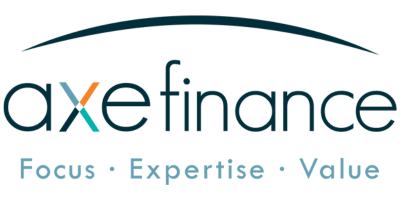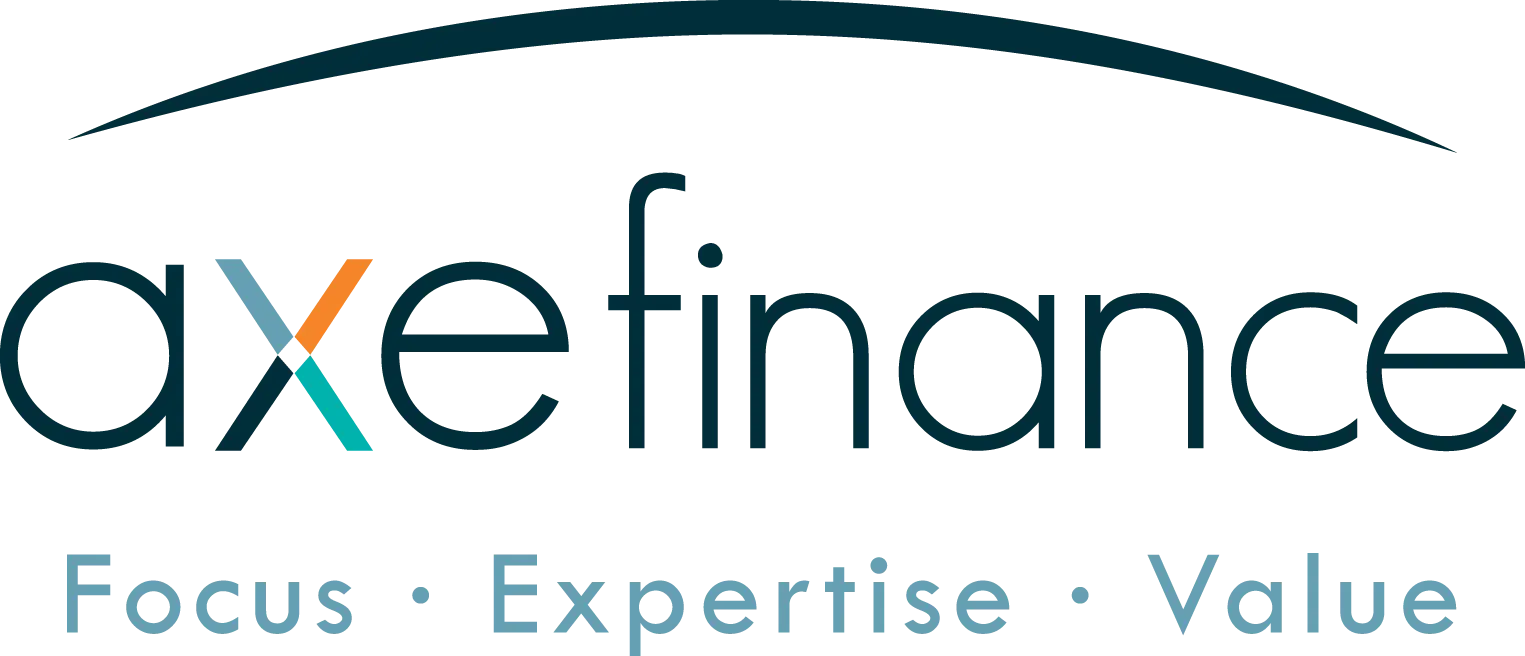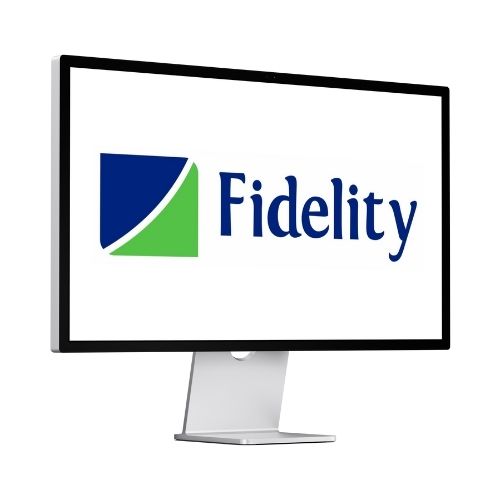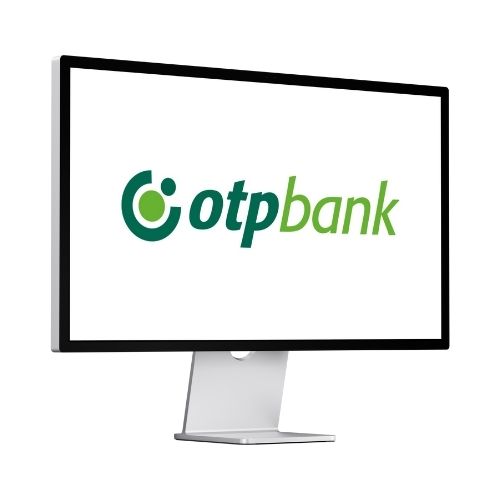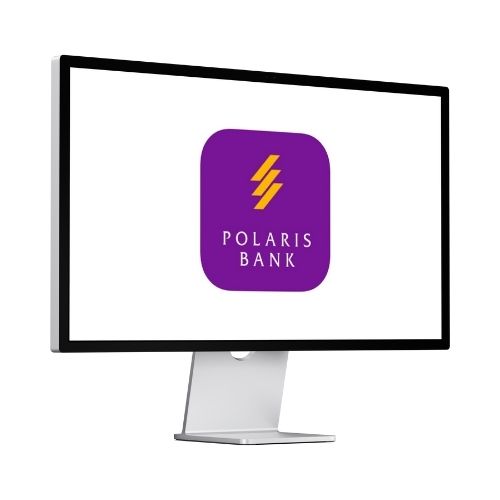For conventional banks, CBO guardrails shape underwriting, monitoring, and resilience; open APIs and data portability are rising in support of innovation and inclusion (Vision 2040). For Islamic banks, the CBO’s Islamic Banking Regulatory Framework (IBRF) and Sharia governance guide product structures and approvals (CBO). ACP’s value is simple: encode credit appetite, KYC, Islamic product rules, collateral, and collections as executable configurations, versioned, maker–checker approved, and measured, so institutions can accelerate time-to-yes, improve portfolio visibility, and prove compliance. With support for multi-entity operations, localized documentation, and robust audit trails, ACP enables faster innovation without leaving governance behind. Adjacent oversight from the Capital Market Authority informs consumer protection, data use, and market integrity that modern lending platforms must respect.
The Digital Lending Landscape in Oman
Oman’s banking industry is advancing toward a digitally enabled credit ecosystem that aligns with national development priorities and prudential expectations. Strategic objectives under Oman Vision 2040 and supervisory oversight by the Central Bank of Oman (CBO) are shaping how lenders design origination journeys, manage credit risk, and deliver compliant servicing at scale. In parallel, policy direction from the Capital Market Authority (CMA) and broader e-government programs (see the official portal at oman.om) reinforce the move to data-driven, interoperable, and resilient financial services. This chapter outlines the macro drivers, open-banking momentum, and competitive signals that frame digital lending in the Sultanate.
1.1 Macros & Mandates: Vision 2040, Supervisory Priorities, Market Readiness
The policy backdrop for digital credit in Oman is anchored in long-term economic diversification and financial sector modernization. Vision 2040 sets the strategic context for digital infrastructure, financial inclusion, and private-sector competitiveness, while the CBO provides prudential guardrails for safe and sound banking practices. Public-sector digital programs further encourage interoperable services and citizen-centric experiences, which in turn influence expectations around speed, transparency, and accessibility in lending.
- National Strategy: Vision objectives emphasize digitization, efficiency, and inclusion (see Oman Vision 2040), creating a policy environment supportive of end-to-end digital credit journeys and ecosystem partnerships.
- Supervisory Oversight: The CBO sets prudential expectations for governance, risk management, and operational resilience across Omani banks (reference: Central Bank of Oman homepage and publications).
- Market Indicators: Data on population, digital adoption, and economic trends, useful for credit product design and portfolio monitoring, are available from the National Centre for Statistics & Information ( NCSI) and other official sources.
- Policy Interfaces: Sectoral rules and consumer protection guidance from the CMA intersect with retail credit distribution channels and disclosure practices; government service modernization can be tracked via oman.om.
1.2 Open Banking Momentum: APIs, Data Portability, Consent
Open-banking initiatives and API connectivity are reshaping how lenders in Oman collect and verify financial data, streamline affordability assessments, and deliver seamless user experiences. While implementation approaches evolve, the trajectory favors secure data sharing with explicit customer consent, standardization of interfaces, and robust controls around privacy and security, principles consistent with international practice and national digitization goals.
- Strategic Direction: Government digital priorities (see Vision 2040 and oman.om) support interoperable financial services that reduce friction in onboarding and loan servicing.
- Supervisory Context: The CBO’s policy role in overseeing banking system safety and integrity ( cbo.gov.om) provides the prudential framework within which open-banking models must operate, particularly around risk management and operational resilience.
- Consumer Protection & Markets: The CMA’s remit over market conduct and disclosure ( cma.gov.om) informs expectations for transparent consent, fair product design, and responsible data use in digitally enabled lending channels.
1.3 Competitive Signals: Moves by Leading Omani Banks
Digital investment patterns among leading institutions offer clear signals about where the market is heading. Integrated platforms, faster time-to-yes, and robust governance features are becoming baseline expectations. Examples from prominent Omani banks illustrate momentum around open banking, digital lending, and Sharia-compliant innovation, each contributing to a more connected and resilient credit ecosystem.
- Sohar International: Publicly communicates digital initiatives and platform evolution to support customer experience and interoperability (bank site: soharinternational.com).
- Bank Muscat: Highlights ongoing modernization of digital channels and lending capabilities to improve operational efficiency and product agility (bank site: bankmuscat.com).
- Bank Nizwa: Continues to expand Sharia-compliant digital platforms and services, reflecting the role of Islamic finance in Oman’s banking mix (bank site: banknizwa.om).
- Regulatory Interface: Market developments remain aligned with prudential oversight by the CBO and broader policy objectives communicated via CMA and oman.om.
Credit Risk Management for Omani Banks
Credit risk management in Oman is guided by prudential oversight from the Central Bank of Oman (CBO) and aligned with international standards such as the Basel Committee on Banking Supervision (BCBS) and accounting frameworks like IFRS 9. Omani banks, conventional and Islamic, are expected to formalize risk appetite, manage concentrations, monitor portfolios with discipline, and govern models with documentation and validation rigor. This chapter outlines practical pillars for risk appetite and concentration control, early warning and portfolio health monitoring, and model governance within the Sultanate’s regulatory and market context.
2.1 Risk Appetite & Concentration
A credible Risk Appetite Framework (RAF) translates board-level tolerance into operational guardrails across obligors, sectors, products, and geographies. In Oman, banks articulate RAF metrics and limits under CBO supervision, while using Basel-inspired practices to manage large exposures and concentration risk.
- Policy foundations: The CBO sets prudential expectations for capital, governance, and risk management (see CBO), complemented by international standards from the BCBS Large Exposures Framework and risk data aggregation principles (BCBS 239).
- Limit structure: Single-obligor limits, group exposure aggregation, sector and geographic caps, and collateral haircuts should be defined with clear escalation paths. RAF dashboards should compare actuals vs. limits and incorporate stress-aware overlays for sectors relevant to the Omani economy (e.g., energy, trade, infrastructure) using official data from NCSI.
- Islamic banking context: For Sharia-compliant portfolios, alignment with the CBO’s Islamic Banking Regulatory Framework (IBRF) is essential (CBO publications: cbo.gov.om), ensuring product structures and risk-sharing contracts (e.g., Murabaha, Ijarah) are reflected in risk appetite and exposure measurement.
- Governance & reporting: Boards and risk committees should review breaches, emerging concentrations, and exception justifications, with formal minutes and action tracking. Where capital market exposures intersect, relevant disclosure and market conduct guidance from the Capital Market Authority (CMA) should be observed.
2.2 Early Warning & Portfolio Health
Post-origination vigilance is central to prudential expectations and to IFRS 9 staging outcomes. Omani banks benefit from codifying Early Warning Indicators (EWIs), automating alerting and ownership, and integrating remediation with collections and restructuring processes where appropriate.
- Signal design: Define quantitative and qualitative EWIs (e.g., days-past-due, limit utilization spikes, covenant breaches, collateral revaluation triggers, adverse media) with thresholds aligned to portfolio segments and products. Tie signals to Expected Credit Loss (ECL) methodology under IFRS 9.
- Case ownership & SLAs: Each alert should open a case with an accountable owner, due dates, and closure criteria. Routing criteria and escalation ladders should comply with internal policies and supervisory expectations communicated by the CBO.
- Data-driven oversight: Portfolio dashboards should consolidate entity-level and group-level exposures, watchlists, and remediation status. Macro indicators from NCSI can inform sector overlays and scenario analysis; where relevant, market conduct considerations from the CMA should shape retail treatment strategies.
- Islamic portfolios: For Islamic finance assets, EWIs should reflect contract-specific triggers (e.g., asset condition in Ijarah, inventory risk in Murabaha) and Sharia governance review cycles (CBO IBRF resources at cbo.gov.om).
2.3 Model Governance
Model governance in Oman follows global good practice: document, validate, challenge, monitor, and control change. Lending models, from scorecards to ML-assisted approaches, must be explainable and reproducible, with decisions tied to a specific model version and input set.
- Lifecycle controls: Maintain inventories covering purpose, owners, version history, and effective dates; capture validation artifacts (back-testing, stability, performance) and committee approvals. Practices should align to the spirit of BCBS guidance and local supervisory expectations (see BCBS and CBO).
- IFRS 9 alignment: For ECL models, ensure staging logic, significant increase in credit risk (SICR) criteria, and macroeconomic overlays are documented and governed in line with IFRS 9, with change logs demonstrating control effectiveness.
- Explainability & documentation: Provide reason codes for scorecards and local explanations for ML features where used; ensure credit decisions are reproducible with archived inputs, transformations, and override rationales. Where Islamic products are modeled, ensure Sharia governance documentation is included (CBO publications: cbo.gov.om).
- Operational resilience: Configuration governance, access control, and event logging should support ICT risk expectations and incident analysis, consistent with national supervisory guidance (refer to CBO) and broader market integrity considerations from the CMA.
Loan Origination & Underwriting (Conventional & Islamic)
Omani lenders are redesigning origination to be faster, more transparent, and fully governed across customer onboarding, affordability assessment, collateral capture, scoring, and approval. Supervisory expectations from the Central Bank of Oman (CBO) and national digital priorities under Oman Vision 2040 set the tone for end-to-end digital journeys that are inclusive, resilient, and demonstrably compliant. For Islamic banks, origination must additionally align with Sharia governance standards and the CBO’s Islamic Banking Regulatory Framework (IBRF), ensuring products and processes remain within approved structures while delivering a modern customer experience (see institutional guidance at cbo.gov.om and industry standards from AAOIFI). This chapter outlines straight-through journey design, data sources in decisioning, and Sharia-compliant origination practices relevant to the Sultanate.
3.1 Straight-Through Journeys: KYC, Affordability, Collateral & Approvals
A robust digital origination journey in Oman begins with strong customer identification and verification, disciplined affordability analysis, controlled collateral workflows, and a clear Delegation of Authority (DoA). Process design should be standardized at group level and configurable for local requirements, with audit evidence embedded throughout to support supervisory review by the CBO.
- Customer onboarding & KYC: Capture and verify identity and beneficial ownership using bank-grade checks; codify risk-based KYC steps and link them to case files for traceability, consistent with national supervisory expectations (CBO).
- Affordability and suitability: Base affordability on verified income and obligations rather than self-reported figures; ensure product suitability criteria and disclosures are presented and archived. National inclusion and digitization goals under Vision 2040 reinforce accessibility and transparency.
- Collateral governance: Apply approved valuation methods, reviewer roles, and expiry/revaluation rules; maintain a lien/charge register and document lineage. Coordinate with market integrity and disclosure expectations where relevant via the CMA.
- Delegation of Authority (DoA): Route applications by risk, exposure band, and segment; enforce maker–checker control and capture override rationales with time-stamped approvals. Maintain a defensible audit trail for internal and supervisory review (CBO).
- Public-facing signals: Leading Omani banks report continued digitization of retail and corporate channels (see institutional portals: Sohar International, Bank Muscat, Bank Nizwa).
3.2 Data Sources in Decisioning: Open APIs, Bureaus & Internal Signals
Decision quality improves when lenders responsibly integrate internal banking data with external sources through secure interfaces. In Oman, banks increasingly adopt API-led data sharing for faster verification, while ensuring lawful use, consent management, and records of processing. This supports national digitization objectives and prudent risk management under the CBO.
- Open API strategies: Use secure APIs to ingest verified account, transaction, and employer data where permissible; bind consent scope and duration to the case record and govern retention and access in line with policy (national context: Vision 2040 and government digital services via oman.om).
- Credit bureau and registries: Integrate bureau or registry checks to validate liabilities and repayment behavior; record response payloads with lineage to support audits and portfolio monitoring (prudential oversight: CBO).
- Internal data pipelines: Leverage core banking histories, behavioral scores, and relationship exposures to enhance underwriting; keep feature logic versioned for reproducibility (examples of digital platform evolution: Bank Muscat, Sohar International).
- Market intelligence overlays: Use official statistics (e.g., sectoral and macro indicators from the National Centre for Statistics & Information) to inform policy cut-offs, sector appetite, and stress overlays.
3.3 Sharia-Compliant Origination: IBRF-Aligned Workflows & Board Governance
Islamic origination in Oman must satisfy Sharia governance and the CBO’s IBRF. Processes should encode contract-specific requirements, pre- and post-approval checks, and Sharia Board oversight, while maintaining the same digital efficiency expected of conventional journeys. Leading Islamic institutions in the Sultanate demonstrate how modern UX and rigorous compliance can coexist.
- Contract-specific steps: Encode Murabaha, Ijarah, Musharakah, and other structures with required documentation, asset identification, and sequence of ownership/transfer; include price disclosure and profit rate rules in line with governance standards (see AAOIFI and the CBO IBRF context).
- Sharia Board workflow: Route products and exceptions to the Sharia Board where required; store approvals, fatwas, and periodic reviews in the case and product records for audit (institutional example: Bank Nizwa).
- Asset-backed verification & controls: Ensure asset existence/transfer checks, supplier invoices, and delivery confirmations are captured and linked to financing documents; maintain collateral and asset registers with renewal triggers.
- Customer transparency: Provide clear disclosures of product terms, rights, and obligations; preserve evidence of acceptance and customer communication, consistent with fair treatment and market conduct expectations (oversight landscape: CMA and CBO).
Loan Servicing, Restructuring & Collections
Servicing quality is central to asset performance and supervisory confidence in Oman. Under the Central Bank of Oman (CBO)’s prudential oversight and market conduct considerations from the Capital Market Authority (CMA), banks are expected to administer accurate schedules, manage delinquencies with clear governance, and execute restructurings that preserve economic value and evidence fair treatment. Digital servicing, informed by official statistics from the National Centre for Statistics & Information (NCSI) and aligned to national digitization priorities (oman.om), enables consistent controls across retail, SME, corporate, and Islamic portfolios.
4.1 Servicing at Scale: Schedules, Profit/Interest & Customer Care
Accurate and transparent account administration supports both customer trust and regulatory assurance. Systems should reflect contract terms precisely, including Islamic profit calculations, and log every change with audit trails for internal review and supervisory queries from the CBO.
- Repayment & calculations: Generate amortization schedules, accruals, and adjustments (holidays, partial payments, early settlements) with versioned histories; apply Sharia-compliant profit recognition where applicable (IBRF context via CBO).
- Customer communications: Dispatch statements, notices, and consented digital messages in Arabic/English; retain delivery proofs to support market conduct expectations (CMA).
- Data integrity: Reconcile core banking and servicing data frequently; monitor exception queues and evidence remediation, leveraging macro context from NCSI for stress overlays.
4.2 Delinquency & Collections: Segmentation, Treatment & Governance
Collections strategies should be risk-based, documented, and respectful of consumer protections. Governance must define who can take which action at each stage, with maker–checker controls and reporting to the CBO as required.
- Segmentation & triggers: Configure days-past-due bands, behavioral scores, collateral status, and sector risk to prioritize actions; align call, SMS, and digital nudges with approved scripts and disclosures (CMA conduct lens).
- Case management & evidence: Each delinquency becomes a case with owner, SLA, and resolution path (promise-to-pay, roll, settlement); retain call notes, letters, and payment proofs for audit and complaint handling.
- Legal & asset actions: Route litigation or recovery actions via governed workflows; preserve collateral valuations, inspection reports, and sale documentation with full lineage (prudential oversight: CBO).
4.3 Restructuring Paths: Viability, Covenants & Islamic Contracts
Restructurings should preserve value where viable and ensure transparent classification and provisioning under applicable accounting and prudential rules. For Islamic assets, changes must respect contract structure and Sharia supervision.
- Viability assessment: Align rework options to updated cash-flow forecasts, sector outlook (e.g., NCSI indicators), and collateral coverage; document SICR and staging logic where IFRS principles are applied.
- Covenants & monitoring: Reset covenants with explicit thresholds and review cycles; configure Early Warning Indicators post-restructure and report material changes per CBO expectations.
- Islamic contracts: Reflect Sharia-compliant paths (e.g., rescheduling in Murabaha, asset substitutions in Ijarah) with Sharia Board approvals and archived fatwas; ensure disclosures meet fair-treatment guidance (CMA).
Regulatory Compliance & Operational Resilience in Oman
Regulatory compliance in Oman is grounded in prudential oversight by the Central Bank of Oman (CBO), market conduct and disclosure expectations from the Capital Market Authority (CMA), and national digital priorities under Oman Vision 2040. Operational resilience draws on these frameworks alongside international good practice (e.g., BCBS guidance and security standards such as ISO/IEC 27001). This chapter outlines how Omani banks can structure compliance management, Islamic governance, and ICT resilience to support safe, transparent, and sustainable digital lending.
5.1 CBO & National Frameworks: Prudential, Outsourcing, and Data Governance
The CBO supervises banking soundness, governance, and risk management across conventional and Islamic institutions, while national policy bodies provide context for digital transformation and citizen services. Banks should maintain clear policy libraries, mapped controls, and evidence trails aligned to local expectations.
- Prudential governance: Align board/committee charters, risk appetite, and control testing to supervisory expectations published by the CBO; maintain audit-ready documentation of policies, breaches, remediations, and regulatory correspondence.
- Outsourcing & third parties: Maintain inventories of material service providers, risk assessments, and monitoring routines consistent with CBO oversight. Where relevant to market activities, observe CMA guidance on disclosure and investor protection ( cma.gov.om).
- National digital priorities: Ensure data handling, customer communications, and e-services are consistent with government digitization goals under Oman Vision 2040 and public service standards accessible via oman.om.
- Data & reporting: Use official statistics from the National Centre for Statistics & Information (NCSI) to inform risk segmentation, scenario analysis, and disclosures; preserve data lineage and records of processing for internal and supervisory review.
5.2 Islamic Banking Governance: IBRF Controls, Sharia Oversight, and Disclosure
Islamic finance operations must comply with the CBO’s Islamic Banking Regulatory Framework (IBRF) and internal Sharia governance. Digital journeys should encode contract-specific steps, board approvals, and audit trails without sacrificing user experience.
- Framework adherence: Map product structures (e.g., Murabaha, Ijarah, Musharakah) to IBRF requirements and internal Sharia policies; maintain documented evidence of approvals and periodic reviews (see CBO).
- Operational Sharia controls: Embed asset identification, ownership transfer, price/profit disclosure, and delivery verification in workflows; archive supplier invoices, contracts, and customer acceptances.
- Market conduct: Ensure clear customer disclosures and fair treatment in line with national conduct expectations; where activities overlap capital markets, reflect CMA guidance on transparency and investor protection ( CMA).
5.3 ICT Resilience & Third-Party Risk: Configuration Control, Logging, and Continuity
Operational resilience requires governed change, observable systems, and tested continuity plans. Omani banks should integrate ICT controls into the same evidence fabric used for credit risk, ensuring consistency across entities and providers.
- Configuration governance: Treat rules, workflows, and access as versioned, maker–checker–approved artifacts with clear effective dates and rollback; align to prudential expectations under the CBO.
- Event logging & forensics: Capture user actions, system events, and API interactions with time stamps and identities; retain logs to support incident analysis and supervisory queries. Reference international good practice (e.g., ISO/IEC 27001) where appropriate.
- Third-party oversight: Maintain registers of external services and data sources with criticality ratings, SLAs, security attestations, and monitoring routines; document exit strategies and continuity provisions (CBO supervision context: cbo.gov.om).
- Continuity & testing: Run tabletop and live failover exercises for core lending components; validate recovery time/point objectives and ensure audit trails survive failover. Coordinate results with governance bodies and, where relevant, with the CMA for market-facing impacts.
The ACP Blueprint for Omani Banks
Axe Finance is a global digital lending solutions provider established in 2004, specializing in credit risk automation across the entire credit lifecycle. Its flagship platform, Axe Credit Portal (ACP), is an AI-enabled, zero-code solution that automates lending from KYC and origination through servicing, collections, and provisioning, with deployment options that include on-premises, SaaS, and cloud. ACP supports all major segments, Retail, SME, Corporate, Financial Institutions, and Sovereign, while maintaining rigorous governance, localization, and auditability for regulated environments. For Omani banks operating under the supervision of the Central Bank of Oman (CBO) and aligned with national priorities set by Oman Vision 2040, ACP provides a practical blueprint: encode policies as executable configurations, orchestrate straight-through processes, and generate evidence by design. The sections below outline how ACP can serve Tier-1 institutions and specialized lenders in the Sultanate, with illustrative examples referencing leading market actors, Sohar International, Bank Muscat, and Bank Nizwa, as potential beneficiaries of this operating model.
6.1 Policy-as-Configuration Across the Credit Lifecycle
ACP’s core advantage is turning policy into governed, auditable configuration, so every stage of the lifecycle is standardized where it must be, localized where regulation or Sharia dictates, and traceable end-to-end for internal and supervisory assurance.
- KYC & Onboarding: Risk-based customer due diligence with identity verification, beneficial ownership capture, and sanctions/PEP screening; case-bound evidence for audits in line with prudential expectations of the CBO.
- Origination & Scoring: Eligibility, affordability, and scoring rules configured via zero-code; consented data ingestion through secure APIs; product suitability disclosures preserved for market-conduct assurance (policy context via CMA).
- Underwriting & Delegation of Authority: Role-based approvals, maker–checker governance, override rationale capture, and version-pinned rule/model usage to support reproducible decisions and committee oversight (CBO).
- Limits, Collateral & Disbursement: Single-obligor and group limits enforced in real time; collateral valuation methods with expiry/review rules; secure disbursement controls and document lineage.
- Servicing & Customer Care: Accurate schedules (interest/profit), payment holidays, partial settlements, and automated customer communications; Arabic/English artifacts with template versioning.
- Monitoring, Early Warnings & Collections: Portfolio-aligned triggers (DPD, utilization, covenants, adverse media), case ownership with SLAs, and governed collections paths; stress overlays informed by official statistics from the NCSI.
- Restructuring & Provisioning: Viability analyses, covenant resets, collateral re-valuation, and Expected Credit Loss (ECL) support consistent with IFRS 9 documentation and reporting expectations.
- Reporting & Audit: Regulatory and internal packs with data lineage; immutable logs of user actions, approvals, and configuration changes to streamline second-line testing and supervisory queries.
6.2 Operating Models & Deployment for Omani Institutions
ACP is engineered for Omani banks’ governance, language, and deployment needs. Zero-code configurability and multi-entity design help large groups and specialized lenders move quickly while remaining exam-ready.
- ACP Studio (Zero-Code): Business teams configure rules (BRM), workflows (BPM), screens (GUI), documents (DMS), and access (IAM) without code, under maker–checker control, accelerating time-to-market while preserving auditability.
- Multi-Entity & Localization: Group standards with controlled entity-level overrides; Arabic/English UX, localized document packs, and jurisdiction-specific checks aligned to the CBO and national programs under Vision 2040.
- Deployment & Data Stewardship: On-premises, private/public cloud, or hybrid models; data scoping by entity/geography and comprehensive logging align with sovereign data expectations communicated through government digital channels (see oman.om).
- Islamic Banking Readiness: Workflows and documentation patterns that reflect contract-specific steps and Sharia Board governance; alignment to local IBRF context (policy references via the CBO) and industry standards (e.g., AAOIFI).
6.3 Illustrative Use Cases for Leading Omani Banks
Axe Credit Portal (ACP) is designed to automate the full credit lifecycle, from KYC and onboarding through origination, underwriting, limit control, collateral management, disbursement, servicing, restructuring, collections, and provisioning, within a single governed platform. Policies become executable configurations (rules, workflows, screens, documents, and access), all versioned with maker–checker approvals and immutable logs. Zero-code tools (ACP Studio) let risk and compliance teams adapt eligibility, affordability, scoring references, Delegation of Authority, Early Warning Indicators, and IFRS 9 provisioning parameters without code changes. Open-architecture integrations support API-led data ingestion with consent tracking, while multi-entity governance enables group standards with controlled local overrides. This operating model helps Omani institutions evidence alignment with the Central Bank of Oman (CBO) and national priorities under Oman Vision 2040, accelerating time-to-yes without compromising auditability.
- Lifecycle automation: Risk-based KYC, sanctions/PEP screening, and beneficial ownership capture; straight-through origination with eligibility/affordability checks; role-based underwriting and DoA; real-time limit enforcement and group exposure views; collateral valuation with expiry/review rules; accurate servicing (interest/profit), communications, and payment handling; EWS-driven monitoring, case-managed collections, structured restructuring paths, and provision calculation with data lineage.
- Governance & evidence: Version-pinned rules/models, time-stamped approvals and overrides, document lineage, and exportable decision files; multi-entity dashboards and cross-entity reporting for boards, auditors, and supervisors.
- Deployment & localization: On-premises, SaaS, or cloud; Arabic/English UX, localized document packs, and jurisdiction-specific checks; open APIs with consent provenance and retention controls.
In Oman’s market, leaders publicly emphasizing digital innovation illustrate where ACP’s capabilities apply. Institutions advancing open-API strategies and mobile-first experiences can leverage ACP’s consented data ingestion, mobile onboarding, and real-time affordability/limit controls to shorten decision cycles while maintaining evidence for the CBO. Large universal banks scaling retail and SME lending can integrate ACP with core systems to deliver straight-through journeys, orchestrate complex corporate underwriting with DoA routing, and align delinquency management with IFRS 9 staging, supported by configuration governance for rapid, auditable policy change and transparent conduct reporting (in contexts where the CMA lens is relevant). In the Islamic segment, providers expanding Sharia-compliant platforms can encode Murabaha, Ijarah, and similar structures with contract-specific steps, Sharia Board checkpoints, asset existence/transfer evidence, and versioned profit-calculation artifacts, creating a defensible trail for Sharia audits under the CBO’s IBRF context.
Illustratively, market communications from Sohar International (digital ecosystems and open interfaces), Bank Muscat (modernized digital channels and lending journeys), and Bank Nizwa (Sharia-compliant digital services) point to priorities that a platform such as ACP is built to serve: API-led origination and servicing, segment-wide scaling across retail/SME/corporate, and rigorously governed Islamic workflows. These examples are referenced solely as leading market signals; ACP’s blueprint is applicable across Tier-1 groups and specialized lenders seeking multi-entity control, faster time-to-yes, stronger NPL containment, and audit-ready evidence from KYC through provisioning.
Why ACP for Omani banks: AI-powered digital lending, open lending architecture, end-to-end loan management, omnichannel journeys, multi-segment breadth, and a zero-code governance layer, deployable on-premises, SaaS, or cloud, position ACP as a credible operating foundation for banks aligning with the CBO and Vision 2040.
